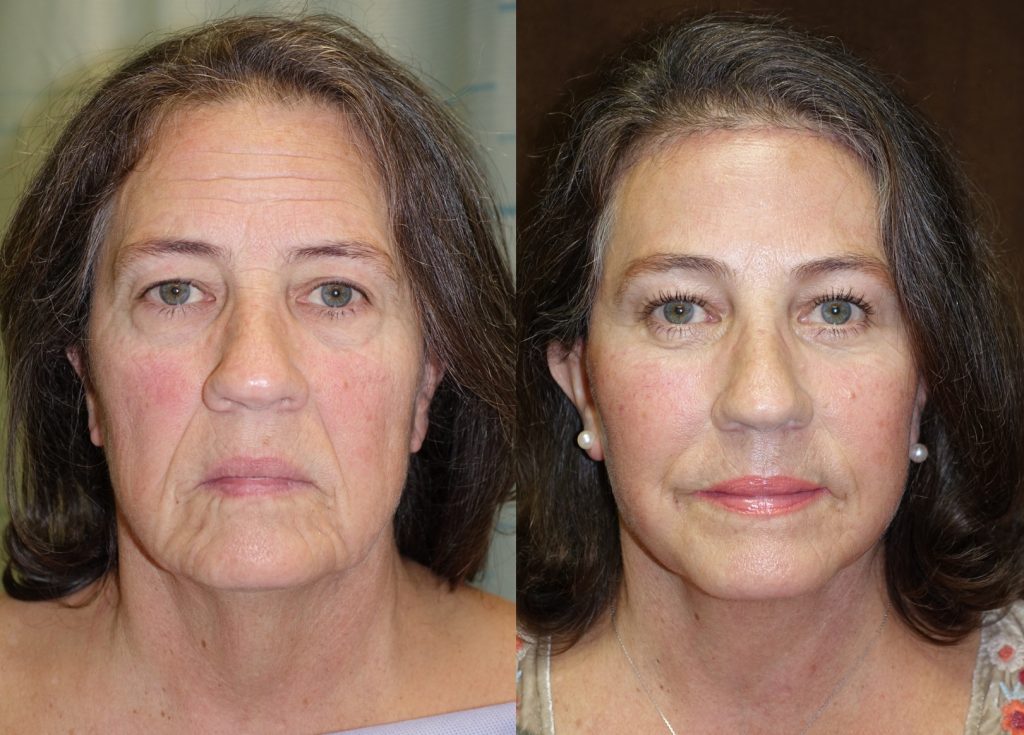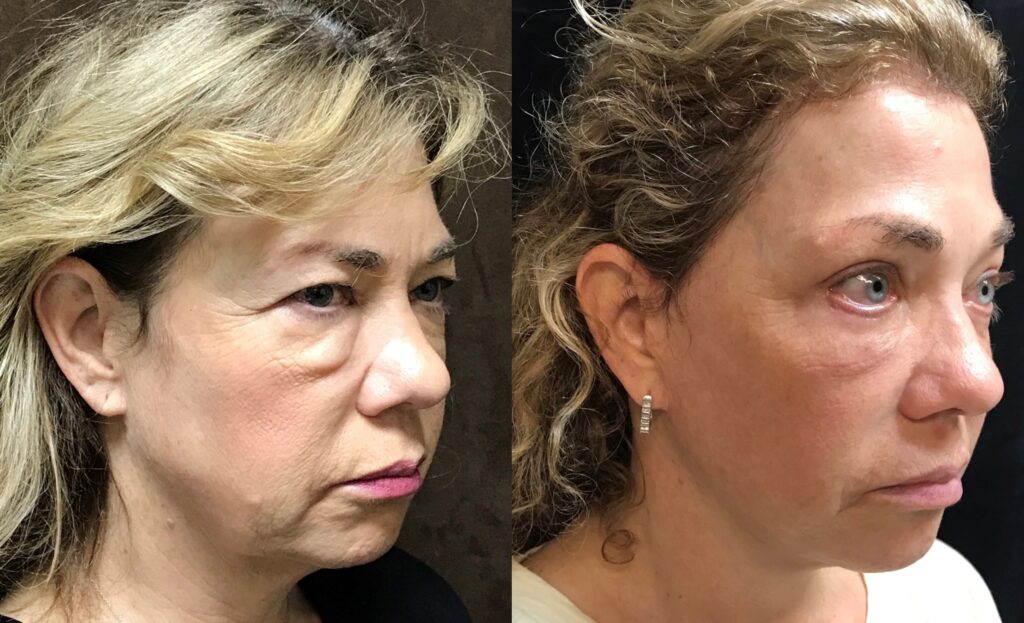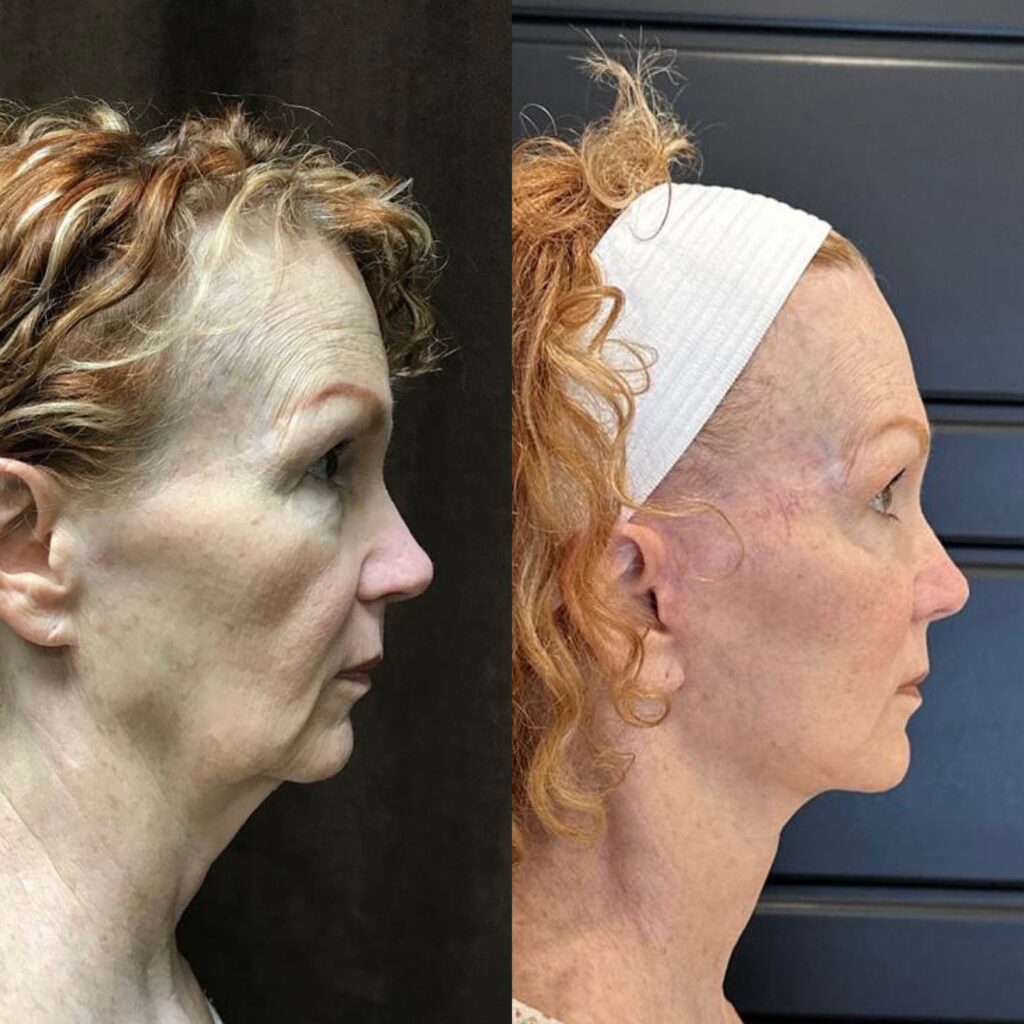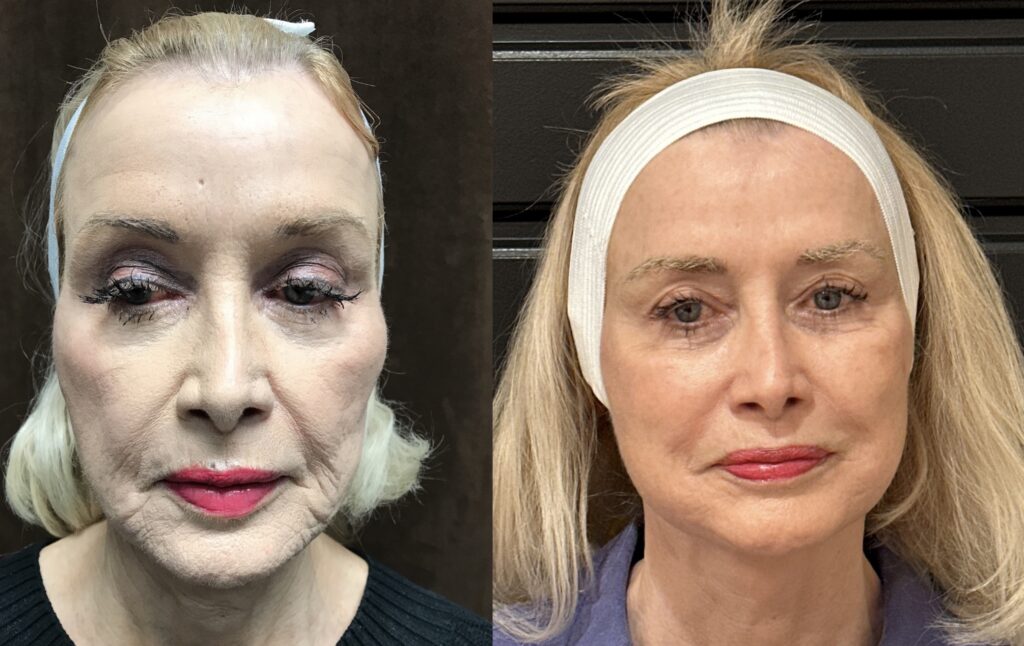Facelift Surgeon in Fort Worth, Also Offering Mini Facelifts.
Overview
Aging, exposure to the elements, and stress all create wrinkles and sagging skin on the cheeks, neck, jowls, and jawline. Many Dallas-Fort Worth residents have rejuvenated their face and erased years from their look with facelift surgery, also known as a rhytidectomy, at Fort Worth Plastic Surgery. When performed by an experienced surgeon, a mini-facelift can have a significant anti-aging, skin tightening effect that makes you look like a younger version of yourself. With years of experience, the surgeons at Fort Worth Plastic Surgery can help patients look years younger, more alert, and healthier. We use a comprehensive approach to facial procedures that addresses not only the skin, but also the underlying muscles, tissue, and fascia to create a more natural-looking result that lasts.
Surgical Technique
There are many ways used to complete a facelift. Facial anatomy, skin laxity, and the overall goal of the patient will determine the best method. Every procedure will be unique and customized for the patient, considering the type and location of the incision, the depth of the tissue layers, the plane of elevation, and the degree of impact.
Skin-Only Facelift
The skin only facelift has been popular among facial surgeons since the early 1900s. Referred to as a cutaneous face lift, this skin only facelift method is minimally invasive because it addresses the skin only. The result of this method is less significant than some of the more recent muscle tightening techniques. Comparatively, it also offers a lesser risk and grants a shorter recovery time for the patient.
Traditional Facelift (SMAS)
The SMAS facelift is the current go to facelift choice. This complex surgery creates end results that are impressive and are long lasting. The method is named from the way it manipulates a muscle group below the skin known medically as the superficial musculo-aponeurotic system. The SMAS muscle group is responsible for making facial expressions. An incision is placed along the edge of the hairline and the skin is then removed and lifted. The underlying facial muscles and tissue are tightened and secured.
Deep Plane Lift
The deep plane lift goes a step further than the traditional approach. It is better suited for those with severe sagging and drooping — usually reserved for older patients. In addition to the SMAS layer being adjusted, a deeper section, known as the deep plane, is also treated. While this procedure offers certain advantages over a traditional facelift, there is a greater risk of damage to facial nerves.
Mini Facelift
A mini facelift is geared towards patients who want some of the benefits of a facelift, while at the same time minimizing the cost and invasive nature of the surgery. Some procedures that are considered “mini” include the “Quicklift” or “Lifestyle Lift”. Patients who wish to maximize the outcome of their surgery, resulting in the most dramatic results, will most likely need to turn to having a full facelift to meet these aesthetic goals.
During/After Surgery
All facelift procedures are performed under general anesthesia at an accredited surgical facility. The length of the surgery will vary, but it generally takes between 3-4 hours. This surgery is considered an outpatient procedure however, some patients may be required to stay overnight in the hospital. After surgery, patients will be bruised and swollen, and the face and neck will feel tight. This will gradually improve within a few days. It is common for patients to feel anxious about how their face will appear post-operatively. Patients should keep in mind it can take several months for the final result to appear.
Before/After Photos
NONSURGICAL ALTERNATIVE?
BOTOX®, injectable fillers, microdermabrasion and chemical peels are examples of some non-surgical procedures that can assist in smoothing out wrinkles, improving fine lines and adding facial volume. These procedures also help to even out skin tone. However, these are treatments that will only affect the skin’s surface. Patients with loose skin, drooping jowls or a sagging neck will need to consider surgery if they want these features improved.







